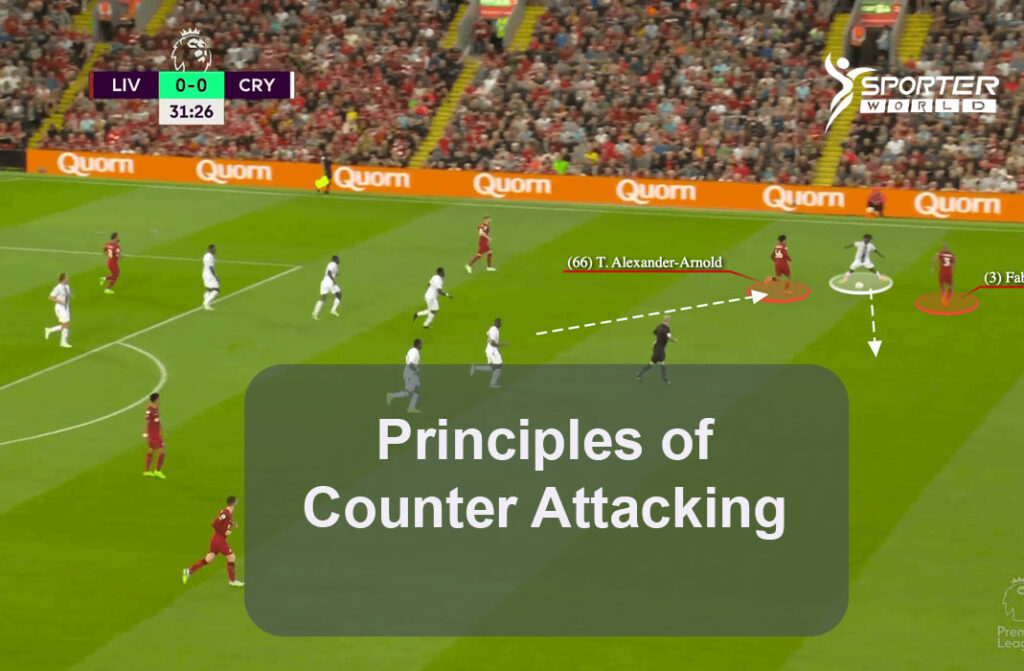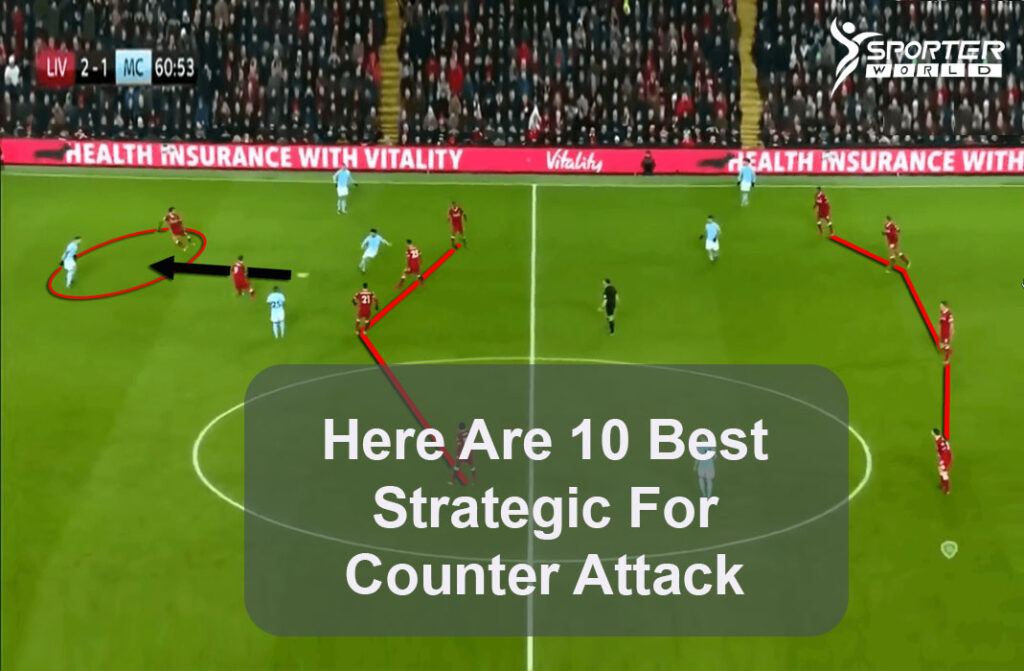In the world of soccer, few tactics evoke as much excitement and anticipation as the art of counter-attacking. This dynamic strategy, when executed with precision and flair, has the potential to turn the tide of a match in a matter of seconds. Like a well-choreographed dance, counter-attacking involves swift and deadly movements, catching the opposition off-guard and exploiting their momentary vulnerabilities.
As teams continue to evolve and adapt their playing styles, counter-attacking has emerged as a key component in the arsenal of successful clubs and national teams alike. With its emphasis on rapid transitions from defense to attack, this strategy has proven to be a potent weapon against heavily favored opponents, making it an attractive option for underdog teams looking to upset the balance of power on the pitch.
In this guide, we delve into the intricacies of counter-attacking in soccer, exploring the fundamental principles, player roles, and tactical nuances that separate the good from the great.
Principles of Counter Attacking

To execute counterattacks efficiently, teams must adhere to certain principles that form the foundation of this strategy
1. Quick Transition
The hallmark of a successful counterattack is the ability to transition rapidly from defense to attack rapidly. Players must switch their mindset and positioning swiftly once possession is won back.
2. Explosive Speed
Speed is crucial in executing counter attacks. Players with rapid acceleration and pace can break through the opponent’s defensive lines before they have a chance to regroup.
Accurate and incisive passing is essential during counter attacks. Players must quickly move the ball forward to exploit spaces left behind by the retreating opposition.
3. Forward Movement
Players must make intelligent and aggressive forward runs to support the counter attack. Proper positioning and understanding of attacking space are vital.
You Also May Like: 10 Best Soccer Drills For High School Players
Here Are 10 Best Strategic For Counter Attack

1. Lightning Quick Transitions
The hallmark of a successful counter-attacking strategy lies in the ability to swiftly transition from defense to attack. Players must be keenly aware of the moment possession is won back, and immediately initiate a rapid forward surge. Timing is crucial, as the element of surprise can catch the opposition off-guard, leaving them scrambling to reorganize their defensive shape.
2. Explosive Speed on the Wings
Utilizing pacey wingers is a key component in counter-attacking play. As possession is regained, the ball should be played out wide to these speedy players who can exploit the space behind the opponent’s full-backs. Their blistering runs down the flanks stretch the defense and create opportunities for crosses or dangerous cuts inside.
3. Dynamic Midfield Link-Up
The midfield plays a pivotal role in counter-attacking strategies. Quick and accurate passing in the middle of the park is essential to maintaining possession and keeping the attack fluid. Midfielders must be adept at making incisive forward passes to release the attacking players and break through the opposition lines.
4. Precise Long Balls
A well-executed long ball can be a potent weapon during counter-attacks. The defenders or midfielders can launch precise long passes into the path of onrushing forwards, bypassing the opponent’s defensive structure and catching them out of position.
5. Timing the Runs
In a counter-attacking system, off-the-ball movement is critical. Players must time their runs to perfection, exploiting gaps in the defensive line or making diagonal runs to receive the ball in dangerous areas. This requires impeccable communication and understanding between teammates.
6. Exploiting the High Defensive Line
Counter-attacking teams often take advantage of opponents who employ a high defensive line. By absorbing pressure and drawing the opposition forward, they can then play balls over the defensive line, releasing their forwards into open space behind the defense.
7. Lethal Counter-Pressing
Winning the ball back quickly after losing possession is crucial to counter-attacking success. Teams employ a high-intensity pressing approach as soon as they lose the ball, aiming to regain possession and launch an immediate offensive response while the opponent is disorganized.
8. Numerical Superiority
An effective counter-attack often involves creating numerical superiority in the attacking phase. By committing more players forward than the opposition can defend against, the counter-attacking team can overwhelm the defense and create clear-cut goal-scoring opportunities.
9. Individual Brilliance
Counter-attacks can be sparked by moments of individual brilliance from skilled players. Dribbling past multiple opponents, a perfectly timed interception, or an audacious long-range strike can turn the tide of a game in an instant.
10. Clinical Finishing
All the swift movements and well-crafted passes culminate in the most critical aspect of counter-attacking: clinical finishing. Strikers and attacking midfielders must maintain composure and precision when presented with scoring chances, maximizing the probability of converting those opportunities into goals.
Mastering these ten counter-attacking strategies requires rigorous training, tactical awareness, and seamless coordination among players. When executed with precision, they can transform any team into a formidable force that can strike fear into even the most defensively sound opponents.
Training and Implementation
Implementing counter attacking strategies requires regular training and team cohesion. Coaches should focus on the following aspects
1. Fitness and Conditioning
Counter attacking demands high levels of fitness. Training should include intense drills to improve speed, agility, and endurance.
2. Game Awareness
Players must develop a strong sense of game awareness to identify when a counter attack opportunity arises. Video analysis and tactical sessions can aid in improving this aspect.
3. Fast Break Drills
Specific drills that simulate quick transitions and counter attacking situations can help players get accustomed to making split second decisions.
4. Communication
Effective communication is vital during counter attacks to ensure players are on the same page and can capitalize on fleeting opportunities.
Frequently Asked Question
FAQ-1: How Do You Counter Attack in Soccer?
Answer: Counter-attacking in soccer involves swiftly transitioning from a defensive to an offensive position to capitalize on the opposition’s vulnerability after losing possession. It requires quick and coordinated movements, exploiting spaces left behind by the attacking team. The key to an effective counter-attack lies in the ability to break forward with speed, accurate passing, and smart decision-making. Players should communicate well to identify the right moment to launch the counter and execute it with precision.
FAQ-2: Which Formation Is Best for Counter-Attack?
Answer: The ideal formation for a counter-attack depends on various factors, including the team’s playing style and the strengths of its players. However, formations that often work well for counter-attacks include the 4-2-3-1, 4-3-3, and 3-5-2. These formations provide a solid defensive foundation while allowing quick transitions to exploit openings in the opponent’s defense. Flexibility and positioning are crucial, enabling players to quickly move the ball forward and capitalize on counter-attacking opportunities.
FAQ-3: How Do You Improve Counter attack in Football?
Answer: Improving counter-attacking skills in football requires a combination of individual and team-oriented efforts. Players should work on their speed, agility, and passing accuracy to execute swift transitions. Regular practice of counter-attacking scenarios during training sessions can help the team develop a better understanding of each other’s movements and improve decision-making under pressure. Coaches should emphasize the importance of quick ball circulation and maintaining defensive organization even during attacking phases.
FAQ-4: What Is the Best Formation for Quick Counter?
Answer: The 4-2-3-1 formation is often considered one of the best setups for a quick counter-attack. With two holding midfielders providing stability, three attacking midfielders in front, and a lone striker, this formation allows for quick ball transitions and effective exploitation of the spaces left behind by the opponent. The wingers and attacking midfielder play a crucial role in carrying the ball forward rapidly, while the holding midfielders protect the defensive line and initiate the counter-attacks.
FAQ-5: How Can a Team Stop Fast Attackers in Soccer?
Answer: To neutralize fast attackers in soccer, a team must adopt a strategic and disciplined defensive approach. Communication among defenders is essential to track the movements of fast attackers effectively. The defensive line should maintain compactness, denying the attackers spaces to exploit. Defenders must avoid diving into tackles, instead forcing the attackers to move laterally and slowing their progress. Additionally, a well-organized pressing game can disrupt the attackers’ rhythm and limit their options.
FAQ-6: How Do You Defend Against Fast Players in Soccer?
Answer: Defending against fast players in soccer requires a mix of individual defending skills and collective team effort. When facing a fast player, a defender should focus on maintaining a balanced stance, avoiding overcommitting, and anticipating the opponent’s movements. Keeping a slight distance can prevent the attacker from exploiting gaps with sheer speed. Meanwhile, the team should provide cover and support to help the defending player, ensuring that the fast player is not isolated one-on-one. Constant communication and tracking back quickly can also be effective defensive strategies against speedy opponents.
Conclusion
Counter attacking is a potent weapon in a soccer team’s arsenal. When executed with precision and tactical acumen, it can dismantle even the most organized defenses. By adhering to fundamental principles, deploying key players strategically, and refining tactical approaches, teams can master the art of counter attacking and turn defense into a devastating offensive weapon on the soccer field.




